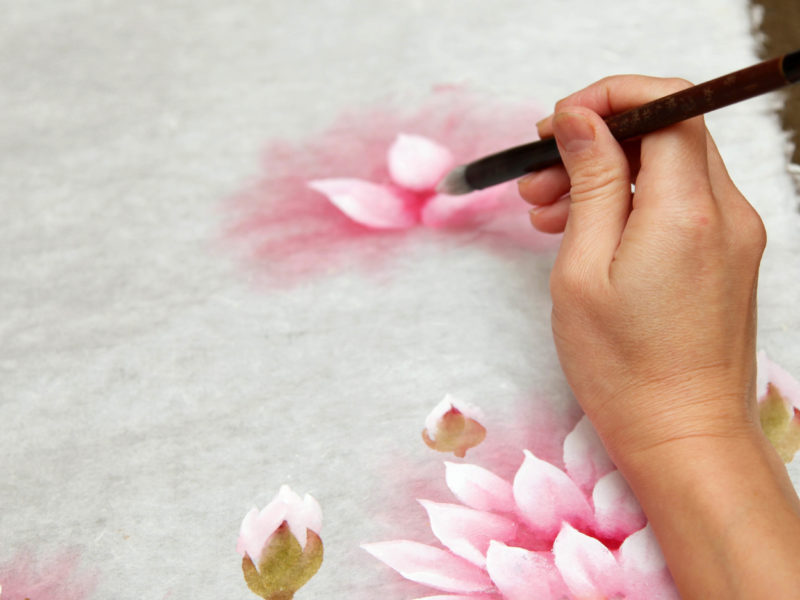
Rāja Yoga, The Yoga of Meditation – The 4 Paths of Yoga: Part 2/5
Yoga is so much more than just strength, flexibility or physical practice. It seeks to let you see the deeper parts of the body that cannot be seen by the naked eye. Yoga, the union of body, mind, soul, and spirit, is rediscovering who we are and returning us to a life of joy, bliss, and freedom. The Four Paths of Yoga, or sets of closely interlinked spiritual practices, can help us reach this goal. The first path is Raja Yoga, known as the Yoga of the mind/meditation.
What is Raja Yoga?
In Sanskrit texts, Raja Yoga was both the goal of yoga and the method to attain it. It is a guidebook to happiness, peace of mind, and self-transformation. The foundation of all branches of Yoga, it brings Yoga into every aspect of life and is the basis for understanding therapeutic applications of Yoga, specifically, how it heals and enlightens.
A practical guide to health and balance in all aspects of life (physical, mental, social, spiritual), Raja Yoga proposes an approach to joyful living. This concept follows the principles of eight-limb yoga or Ashtanga Yoga which was compiled by the sage, Patanjali.
• Yamas or self-control (social code)
• Niyamas or discipline (personal code)
• Asana (postures)
• Pranayama (control of prana, life force)
• Pratyahara (withdrawal of the senses from external objects)
• Dharana (concentration)
• Dhyana (meditation)
• Samadhi (complete realisation)
This pathway uses the mind as an instrument for looking inwards and uncovering the inner self. Considered the “King of Yogas”, the benefits of meditation for spiritual self-realisation and the purposeful evolution of consciousness are emphasised.
The Yoga of the Mind
Yamas and Niyamas are tools to purify the senses and can help overcome the limiting aspect of the mind. Their role is to transform the negative into positive radiance by cultivating qualities such as truthfulness, self-introspection and contentment amongst others.
Asanas steady the physical body whilst Pranayama helps to regulate and co-ordinate the subtle forces within the body. Yama, Niyama, Asana and Pranayama are referred to as Hatha Yoga and represent the first four limbs that aid the modification of human behaviour.
In the next two stages, Pratyahara and Dharana allude to bringing the mind into a state of peace and harmony. Pratyahara begins with the relaxation of the sense and mind often beginning with Yoga Nidra (yogic sleep) as the first practice. Other practices include Antar Mouna – inner silence and observance of thoughts paving the way to a state of positive thinking.
In this manner, Pratyahara gradually prepares the mind and leads to unwavering concentration and mental clarity – a state of Dharana; which lays the foundation for meditation to become truly transformative.
Raja Yoga thus is the science that teaches us how to gain the power of concentration and how we can observe the internal states (mind, body, soul) with the help of the mind. It is focused on the link between the body and mind – if the body is healthy, the mind will also be healthy. It is well-known psychological knowledge that our thoughts and emotions can influence our health. Introducing a meditation practice as a part of a proactive or preventative health plan can have profound results.
Raja Yoga Meditation Practice
Raja Yoga meditation is a form of meditation that is accessible to people of all backgrounds, requiring no particular beliefs or faith. This simple and scientific technique elicits physical and mental relaxation. Regular practice transforms overall well-being and can be practiced for maintaining health. You can start by practicing this meditation technique for 20 minutes a day.
• Locate a peaceful space. Meditation is best done in a calm, peaceful environment with minimal distractions.
• Take a comfortable seat. Whether you are sitting cross-legged on the ground or in a chair, ensure you feel comfortable and stable. Allow yourself to notice each of your senses.
• Bring your attention to the present. Traditionally, Raja yoga meditation instructs you to open your eyes and concentrate on a focal point.
• Channel your thoughts. Acknowledge and let pass any thoughts that come up, keep coming back to your point of focus.
• Create a positive thought or intention. Let this be the focus of your awareness as you sit in meditation. You will slowly start to notice that this thought will bloom into a feeling that radiates through your entire being. Continue meditating on your positive thought.
• Keep the feeling of peace. Once you have finished your meditation, maintain this peaceful feeling and carry it with you throughout your day.
Benefits of Raja Yoga Meditation
Raja Yoga Meditation provides a lifetime of benefits, including reduced stress, anxiety and lessened attachment to material objects. When the mind is in a state of calm, one is better able to manage their thoughts, emotions and reactions in stressful situations.
This type of meditation can invoke positive qualities such as happiness, bliss, knowledge, peace, love and calmness. Letting go of distracting thoughts, removing clutter from the mind and sitting in silence can help the mind become clear and focused, adding value to our work and providing us with better results. By encouraging you to stay in the present, Raja Yoga meditation helps increase memory and concentration. By training your mind to think positively, calmly, and clear negative thoughts, sleep quality can improve.
Your Progress
The journey of transforming conditioned and negative patterns of the mind is not easy. To elaborate with a visual metaphor; water in a pot can appear clean and clear despite the bottom of the pot containing mud. It’s only as we start to clean the pot that the mud is stirred up, making the water brown and murky.
The same goes for the mind. When deeply embedded impressions are stirred up through the techniques of Raja Yoga, they colour the experiences of the mind. Gradually with patience and effort, the mind becomes clear, calm and positive. It can then create an experience of balance and harmony accompanied by a deeper understanding of yourself and others. One of the basic tenets of overall health and wellbeing is that healing takes place from within; a commitment to Raja Yoga Meditation can help to achieve this transformation.
Further Reading
Mind, Mind Management & Raja Yoga by S. Saraswati (product code: YOGA02) – learn how to harness the potential of the mind and explore this life-changing practical, step-by-step method.
All proceeds are donated to the Bihar School of Yoga to help their community outreach programmes.




